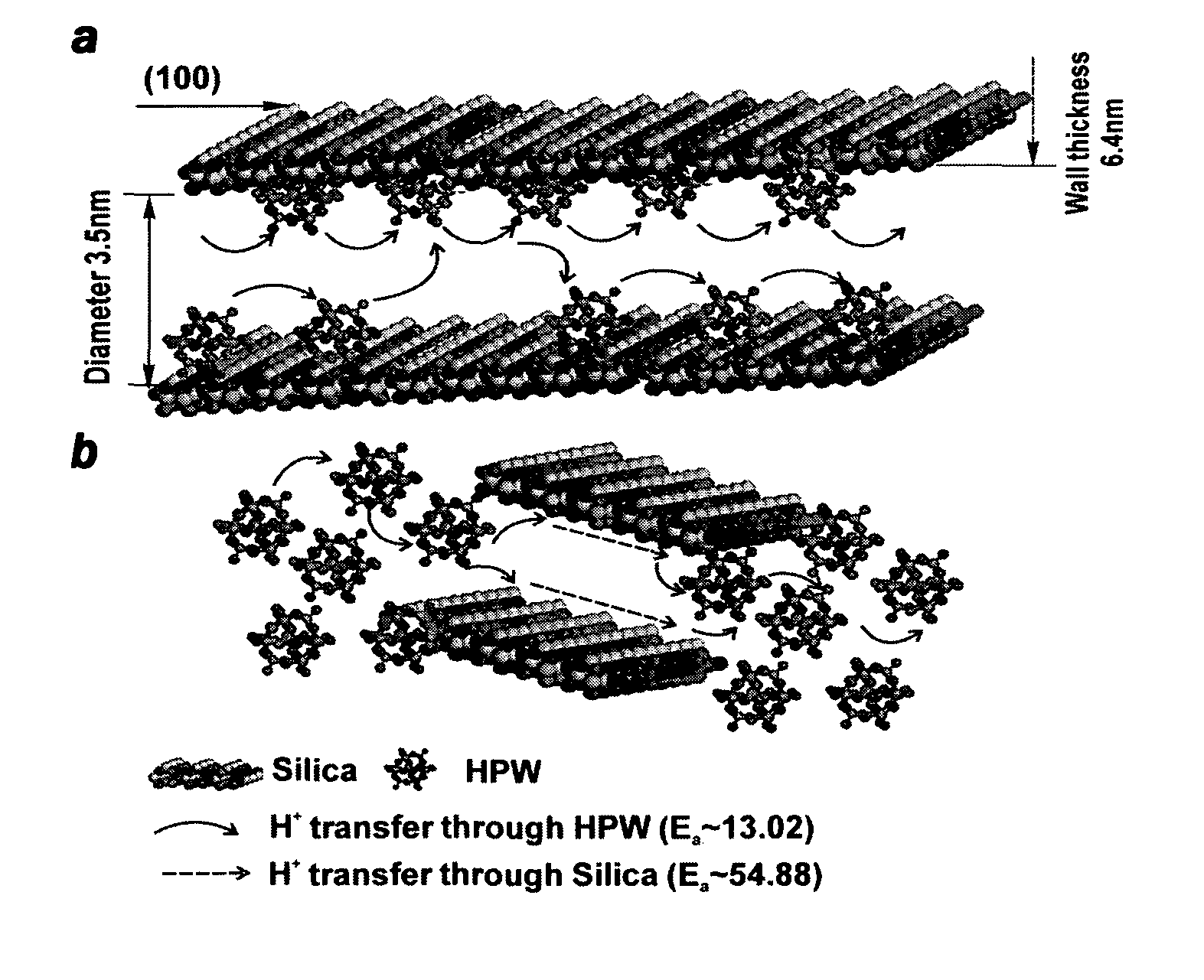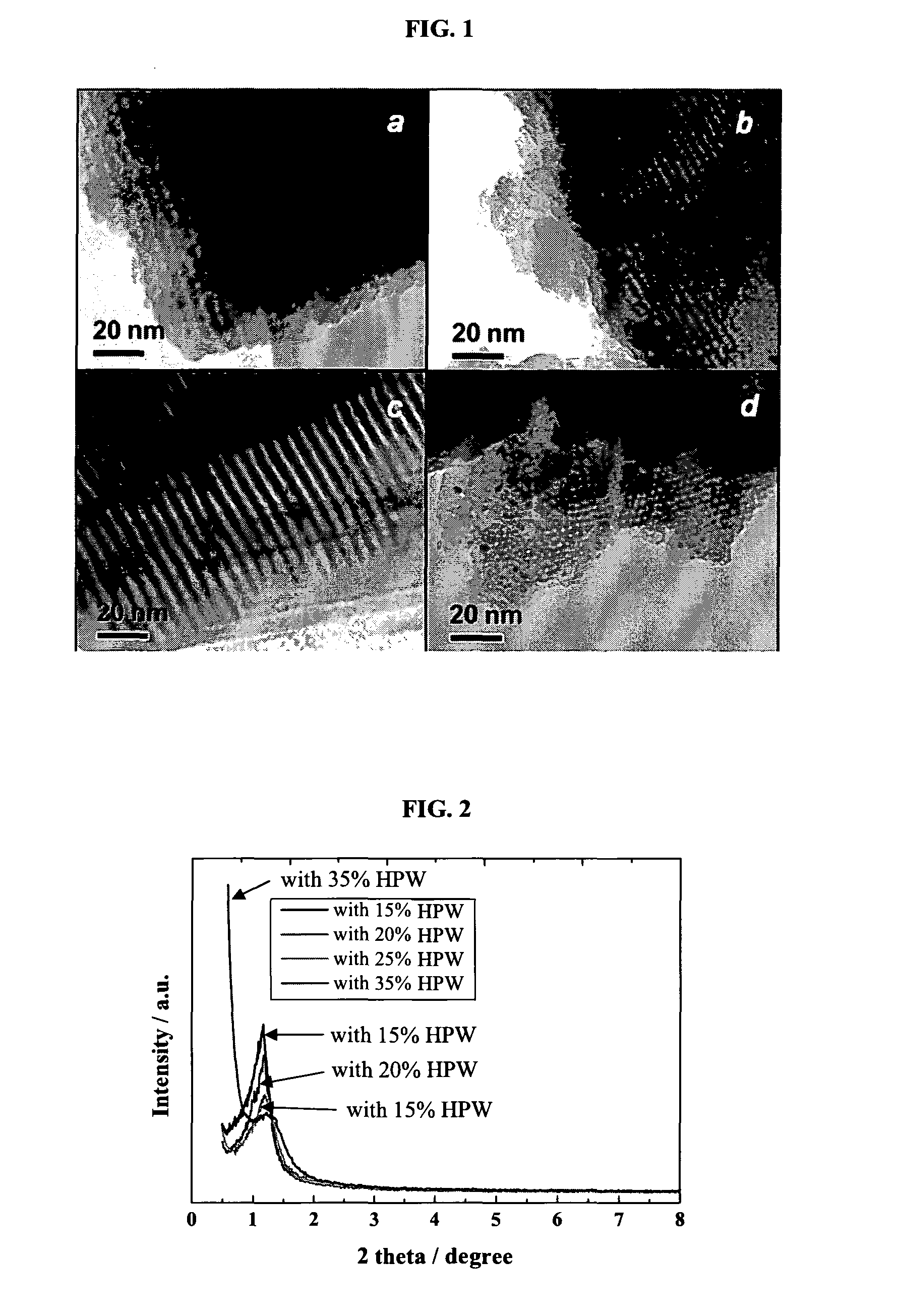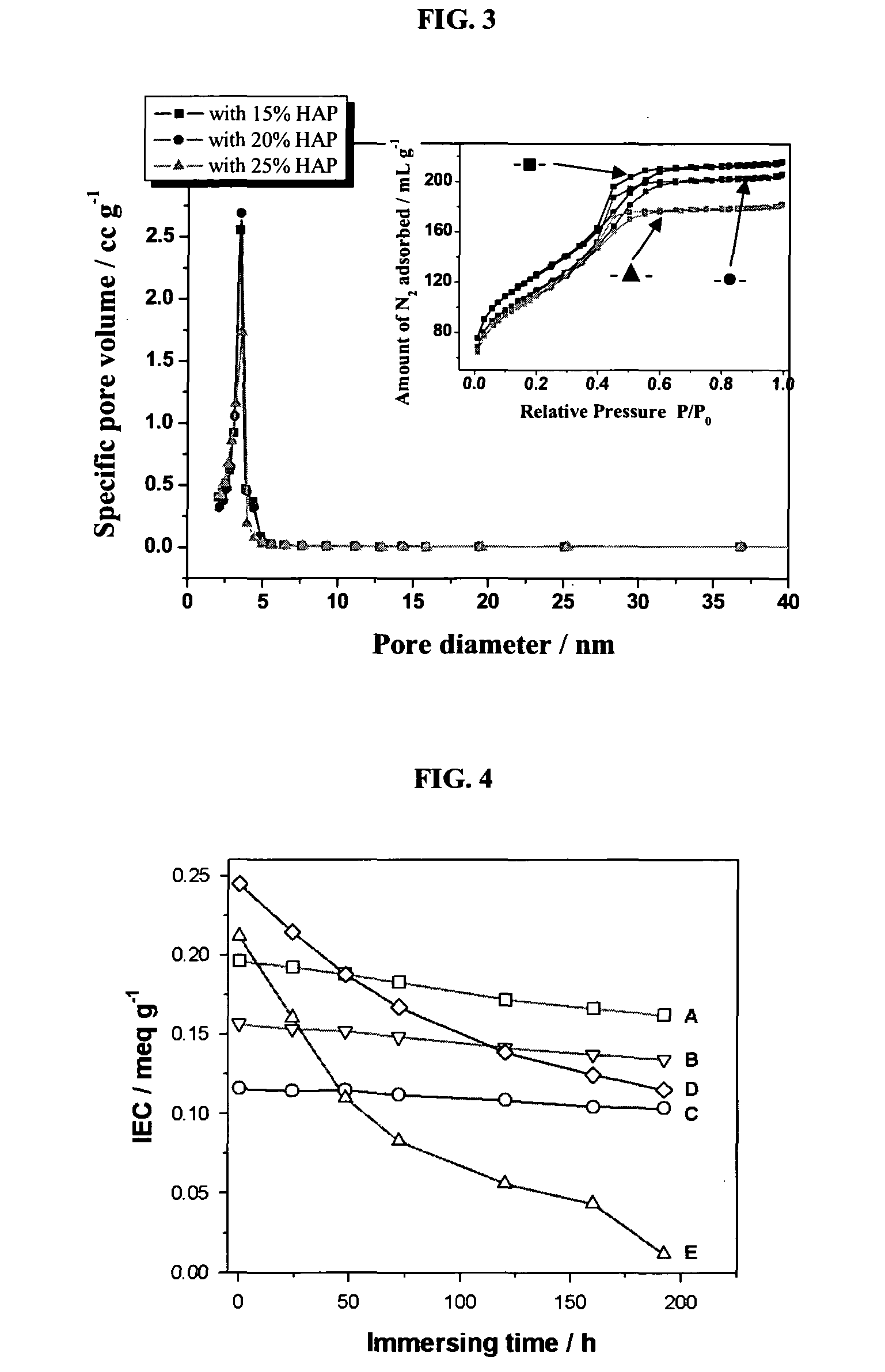Proton exchange membrane for fuel cell applications
a technology of proton exchange membrane and fuel cell, which is applied in the direction of fuel cells, electrochemical generators, coatings, etc., can solve the problems of inability to operate at temperatures higher than 100° c, co poisoning,
- Summary
- Abstract
- Description
- Claims
- Application Information
AI Technical Summary
Benefits of technology
Problems solved by technology
Method used
Image
Examples
examples
[0152]Manufacture of an Inorganic Proton Conducting Electrolyte Composite
[0153]A mesoporous HPW / silica electrolyte composite was prepared as follows. First, tetraethyl orthosilicate (TEOS, 99.9%, Sigma-Aldrich) was dissolved into an alcohol, such as ethanol. The dropwise addition of the 12-phosphotungstic acid (H3PW12O40.nH2O(HPW), analytically pure, Sigma-Aldrich) solution was carried out with vigorous stirring. P123 surfactant was prepared by dissolving P123 in ethanol. The mixed solution of TEOS / HPW was slowly added into P123 surfactant solution under vigorous stirring. The pH of the solution was then adjusted to 1 by adding HCl (2M) under stirring for 5 h. The molar ratio of the precursors and chemical used for synthesis of HPW / silica is x mole HPW: 0.1 mole TEOS: 0.0012 mole P123: 1 mole ethanol: 0.02 mole HCl: 2.5 mole H2O. Uniform and transparent sol was obtained at room temperature. Table 1 indicates the molar ratio of HPW to TEOS for HPW / silica with different compositions. ...
PUM
| Property | Measurement | Unit |
|---|---|---|
| temperatures | aaaaa | aaaaa |
| temperature | aaaaa | aaaaa |
| temperature | aaaaa | aaaaa |
Abstract
Description
Claims
Application Information
 Login to View More
Login to View More - R&D
- Intellectual Property
- Life Sciences
- Materials
- Tech Scout
- Unparalleled Data Quality
- Higher Quality Content
- 60% Fewer Hallucinations
Browse by: Latest US Patents, China's latest patents, Technical Efficacy Thesaurus, Application Domain, Technology Topic, Popular Technical Reports.
© 2025 PatSnap. All rights reserved.Legal|Privacy policy|Modern Slavery Act Transparency Statement|Sitemap|About US| Contact US: help@patsnap.com



